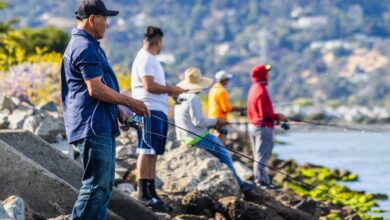How Do You Plan a Snowshoeing Trip
Snowshoeing is an exhilarating way to explore winter landscapes while keeping fit. With the right preparation, you can turn an ordinary day into an adventure filled with breathtaking views and invigorating exercise. Whether you’re a novice or an experienced snowshoer, planning your trip carefully will enhance your overall experience.
Choose the Right Location
Selecting the perfect snowshoeing destination is the first step in your planning process. Look for areas known for their picturesque trails, such as national parks, state forests, or local recreational areas. Websites and apps like AllTrails or Trailforks can provide insights into trail conditions, difficulty levels, and user reviews. Consider proximity to your home and the accessibility of the location. Ensure that you verify snow conditions beforehand, as some trails may not be suitable if there hasn’t been sufficient snowfall.
Understand Trail Conditions
Before heading out, familiarize yourself with the current trail conditions. Seasonal changes can significantly affect accessibility and safety. Check for recent reports about trail grooming or hazards like fallen trees or icy patches. Websites dedicated to outdoor activities often provide updates on trail conditions and snow depth. Additionally, local ranger stations can be a valuable resource for obtaining accurate information about the area you plan to explore.
Gear Up Properly
Investing in the right gear is crucial for a successful snowshoeing trip. Snowshoes come in various styles, designed for different types of terrain and snow conditions. If you are a beginner, consider renting equipment from a local outdoor shop. This allows you to try various styles before making a purchase. In addition to snowshoes, wear insulated, waterproof boots to keep your feet warm and dry. Dress in layers, as temperatures can fluctuate throughout the day. Don’t forget essentials such as gloves, hats, and goggles to protect yourself from the cold and wind.
Plan Your Route and Duration
Carefully planning your route and estimating how long you’ll be out is essential for safety. Choose a trail that matches your skill level and physical fitness. Beginners should start with shorter, easier routes, while seasoned snowshoers may seek longer trails with more elevation gain. Always factor in the time it takes to return to your starting point, as well as breaks for rest and snacks. A good rule of thumb is to account for approximately twice the time you would take for hiking in summer conditions.
Pack the Essentials
Having the right supplies can make or break your snowshoeing adventure. In addition to your snowshoes, pack a backpack with essentials like water, snacks, a first aid kit, a map, and a compass or GPS device. Layering your clothing is important, but ensure you have an extra layer in case temperatures drop. Sunscreen and lip balm are also vital, as UV rays can be potent in snowy environments. A headlamp may be necessary if you plan to be out as daylight fades.
Stay Safe and Informed
Snowshoeing can be a fantastic experience, but safety should always be your top priority. Inform someone about your plan, including your expected return time. Always carry a fully charged mobile phone, but be mindful that service may be limited in remote areas. Familiarize yourself with basic avalanche safety if you’re venturing into mountainous terrain. Learn how to recognize avalanche-prone slopes and carry safety equipment if necessary.
Making the Most of Your Experience
To truly enjoy your snowshoeing trip, embrace the beauty of nature around you. Take time to appreciate the scenery and the tranquility of the winter landscape. Capture photographs, observe wildlife, and enjoy the fresh air. Snowshoeing is not just a physical activity; it’s an opportunity to connect with the outdoors and create lasting memories.
Snowshoeing can be an unforgettable experience, provided you take the time to plan effectively. From selecting the right location to ensuring you have the necessary gear and knowledge, each step you take in preparation will contribute to the enjoyment and safety of your adventure. Remember, the joy of snowshoeing lies not just in the destination, but in the journey itself.







